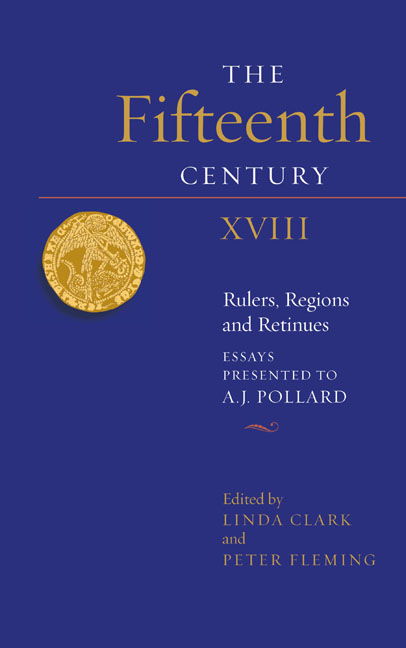A Yorkist Legacy for the Tudor Prince of Wales on the Welsh Marches: Affinity-Building, Regional Government and National Politics, 1471–1502
Published online by Cambridge University Press: 24 November 2020
Summary
At the start of Henry VII's reign the legacy of the fifteenth-century civil wars was felt in a variety of ways within the Welsh marches. More than in many other regions, local leadership of the English marcher counties had changed hands in step with the struggle for the crown and the alignment of allies behind the contenders. The overlapping and interconnected lordship of marcher families, however, meant that very few networks had been completely eclipsed by their political decision-making during previous crises. A.J. Pollard's Ph.D. thesis of 1968 considered the role of the Talbots, earls of Shrewsbury, in this phase of the Wars of the Roses, and analysed how they were eventually reconciled to Edward IV, both nationally and in the marcher region. As the fifteenth century progressed the lordship of Mortimer, York, Talbot, Stafford and Herbert enjoyed periods of prominence in alignment with the crown or independently, sometimes representing directly the interests of the Westminster government, though in other periods counter-balancing them. The regional landed power of the prince of Wales also ensured that all monarchs had a variety of routes through which the aristocracy and gentry of the march were connected to each other and to the crown.
At first glance, Henry, earl of Richmond (the future Henry VII), had little personal connection with the march. His paternal Tudor ancestry linked him to north Wales and Anglesey. His mother's Beaufort relatives had few connections in the region. Of his surviving family only his uncle, Jasper, earl of Pembroke, could claim any direct lordship in Wales; but that was in Pembrokeshire and the south, and even that link had become dormant once Jasper, Henry and a handful of their Lancastrian Beaufort allies were forced into exile in spring 1471 at the end of their brief restoration during Henry VI's six-month readeption of the crown. Before then, during his childhood after February 1462, Henry had been a ward of William, Lord Herbert, who acquired Jasper's earldom of Pembroke in 1468. A year later, after Herbert's death at the battle of Edgcote, his widow Anne Devereux continued to look afterHenry until October 1470, when he was reunited with his mother, Margaret Beaufort, countess of Richmond.
- Type
- Chapter
- Information
- The Fifteenth Century XVIIIRulers, Regions and Retinues. Essays presented to A.J. Pollard, pp. 119 - 130Publisher: Boydell & BrewerPrint publication year: 2020

